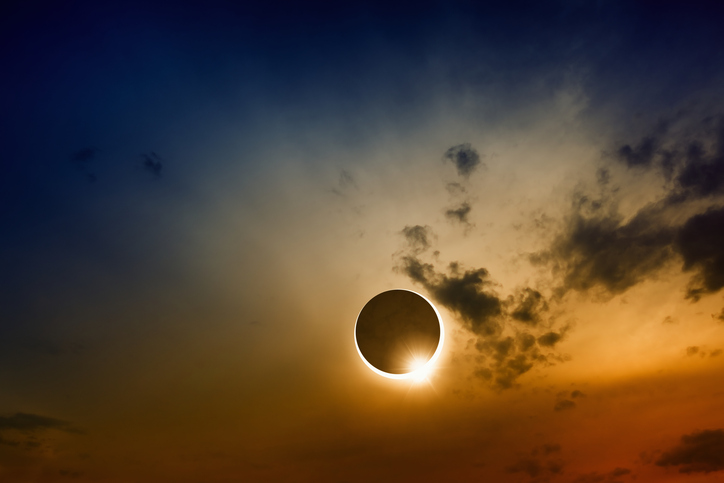It’s been nearly 40 years since the last total solar eclipse was visible in the United States. Today’s eclipse will be visible for 2 hours and 50 minutes in the Cincinnati and Northern Kentucky area beginning at 1:00 p.m., with peak viewing time at 2:28 p.m. While this is an exciting natural spectacle to witness, it’s critical to view the eclipse safely to avoid permanent loss of vision.
Special eclipse glasses -which block everything except the eclipse – are needed to view the eclipse directly. If you do not have the appropriate eye protection, you risk damaging your eyes.
“While the eclipse decreases the amount of sunlight that you can see, it does not diminish the intensity of the solar radiation,” said Dr. Todd Purkiss, a retina specialist. “It is tempting to think you can look at the eclipse without eye protection, but even brief exposure can result in permanent loss of vision. The intense solar radiation is damaging to the photoreceptors, which are the light sensing cells of the eye. When damaged, these cells will not recover.”
There have been some reports of fake solar eclipse glasses showing up for purchase online. Make sure to check to see if your eclipse glasses made the list of safe products compiled by the American Astronomical Society.
“To protect your eyes during eclipse viewing, you need glasses that meet the ISO 12312-2 standard. Such glasses are 100,000 times more dense than average sunglasses. They are so dense that you will not be able to see anything other than the sun with them on,” Dr. Purkiss said. “It’s important to first put on the glasses, then look up at the sun. When finished viewing, look away from the sun before removing the glasses.”
Most stores are sold out of eclipse glasses, but you can safely view the eclipse on TV or make a device that allows for indirect, safe viewing.
Thinking of taking photos of the eclipse? Think again. You need a special filter on your camera. You can still damage your eyes if viewing the eclipse through your camera lens or phone, even while wearing eclipse glasses, according to the American Optometric Association.
Although the moon will not cover the sun in totality in this region, the sun will be 91 percent blocked by the moon at the peak. Because there will not be any moment where the sun is completely covered in Northern Kentucky and southern Ohio, there will not be a safe time to look directly at the sun without eclipse glasses.

